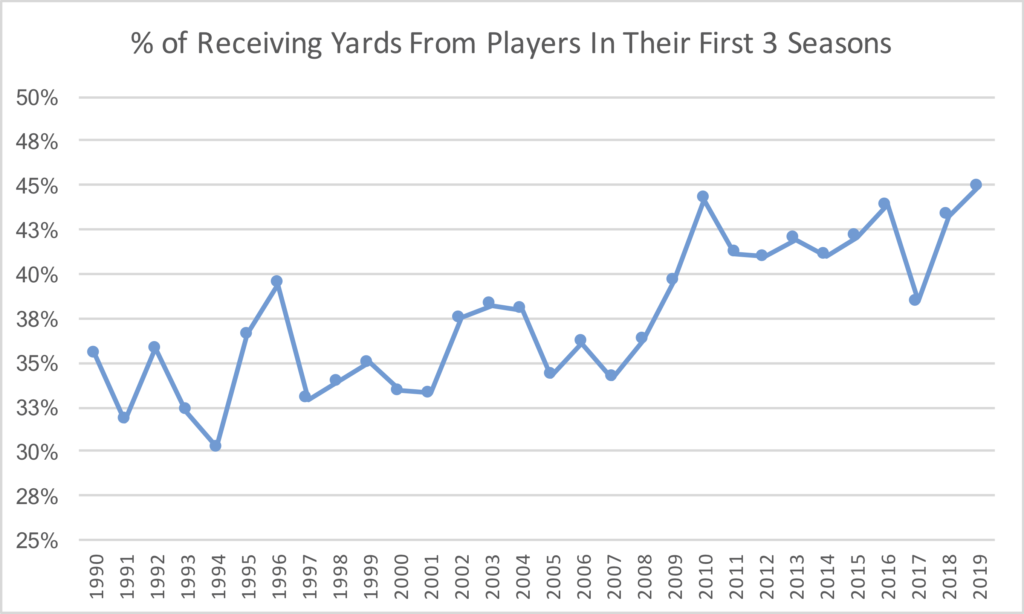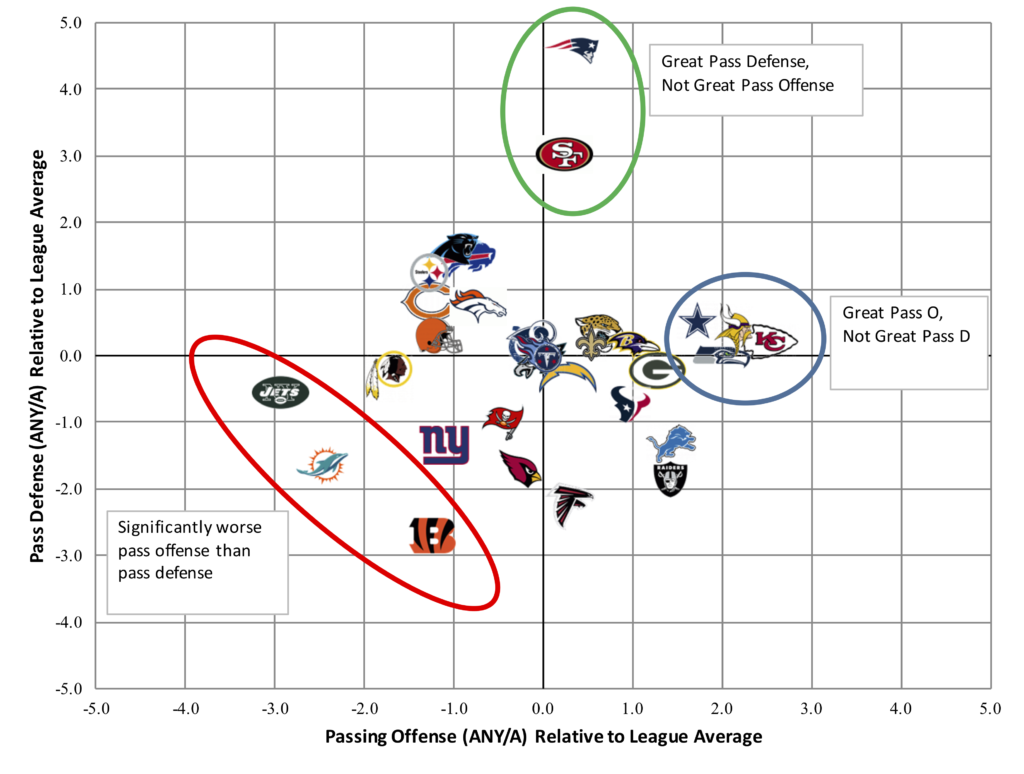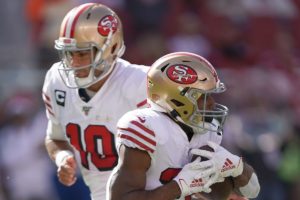The 1996 Green Bay Packers were one of the best teams in league history for a variety of reasons. They are one of just two teams since the merger to lead the league in both points scored and points allowed, joining the undefeated 1972 Miami Dolphins.
But the most historically notable performance from the Packers that season didn’t come from Hall of Fame quarterback Brett Favre. Nor was it from Hall of Fame defensive end Reggie White. In fact, it wasn’t anybody from either the offense or the defense. No, the Packer who really broke football in 1996 was their return specialist, Desmond Howard.
In 2014, Chase used a simple method to rank every punt returner in history. He took punt return yards, added a 15-yard bonus for any touchdown, divided by total return attempts, subtracted the leaguewide per-return average, and then multiplied by the number of returns to generate a sort of “value over average returner”. By that measure, Howard’s 1996 was, indeed, the most valuable season by a punt returner, though the difference between Howard (330 value) and second-place Patrick Peterson (321 value) was small, and if you pro-rated his performance to sixteen games, Billy “White Shoes” Johnson would come even closer still (328 value).
But for several reasons, Chase’s simple analysis underrates Desmond Howard’s 1996 campaign. I believe with the proper context, Howard’s 1996 season isn’t just the top punt return season in history, it’s possibly further ahead of second place than any player at any position has ever been ahead of the second-best historical season in any statistic.
To make my case, I’ll compare Howard’s season to the next-best seasons by Chase’s methodology, Devin Hester‘s 2007 and Patrick Peterson’s 2011.
Looking at the raw statistics, Howard doesn’t really stand out. Howard (58/875/3) had more yards than Hester (42/651/4) and Peterson (44/699/4), but fewer touchdowns and fewer yards per return. Adjusting for era doesn’t change any of this: Hester averaged 6.6 more yards per return than the average punt returner (excluding Devin Hester) in 2007, Peterson averaged 6.2 more yards per punt return than the average punt returner in 2011, and Howard averaged 5.3 more yards per punt return than the average punt returner in 1996. If you multiply these values by the number of returns, Howard created 308 marginal yards vs. 279 for Hester and 273 for Peterson.
Howard had one fewer return touchdown, but return touchdowns were lower across the board in 1996. In total, Desmond Howard produced 23.1% of all punt return touchdowns during the 1996 regular season while Devin Hester produced 23.5% and Patrick Peterson 20% in their respective years. Again, everything to this point looks fairly comparable. You might think all three players were similarly effective and Howard simply cashed in on the fact that he had 30-40% more opportunities, a factor that was largely outside of his control.
(The one area where Howard does stand out from the other two is fumbles. In 2011, Patrick Peterson fielded 44 punts and fumbled three of them. In 2006, Devin Hester fielded 42 punts and fumbled five of them. Despite fielding 58 punts in 1996, Desmond Howard only fumbled one of them.)
Football Outsiders compares every return to league average and estimates how many points a unit was worth in any given season . In part because of Howard’s superior ball security, Football Outsiders values the 1996 Packers’ return unit as worth 25.3 points, the 2007 Bears’ as worth 18.0, and the 2011 Cardinals’ as worth 20.0. If you divide those point values by the total number of returns, the Packers gained 0.44 points per return, the Bears gained 0.41, and the Cardinals gained 0.43. By this measure, the Packers were slightly more efficient per opportunity, but again, all three returners were in the same ballpark.
There is one significant problem with using total punt returns as a measure of opportunity, however. Some returners are more conservative, calling fair catch or letting a punt bounce. Being more selective about which punts to return will boost a player’s per-return average. Other returners are more aggressive, trying to return everything they get their hands on, which hurts their average but results in more yards for their team.
If we instead we measure opportunity by the number of punts faced instead of the number of punts fielded, Desmond Howard actually had the least opportunity of the trio. The 1996 Green Bay Packers, despite their vaunted defense, forced 90 punts compared to 92 for the 2006 Bears and 94 for the 2011 Cardinals. This means the Packers punt return unit added 0.28 points of value per punt faced compared to 0.20 for the Bears and 0.21 for the Cardinals, a significant difference. (Alternately: Howard averaged 9.7 yards per punt, Peterson averaged 7.4, and Hester averaged 7.1.)
Of course, measuring player performance per punt presents challenges of its own. Opposing punters might deliberately kick shorter to prevent a return, which means the returner has impacted field position despite not touching the football. One way to attempt to control for this is to look at the gross and net punting averages of all punters to face each returner.
In 1996, the teams Green Bay played averaged 43.3 gross yards per punt over the whole year and 42.5 gross yards per punt against Green Bay. Teams that faced the 2007 Bears averaged 44.2 gross yards per punt over the whole season but just 40.5 per punt against Chicago. Teams that faced the 2011 Cardinals averaged 46.2 gross yards per punt over the whole season and 44.4 against Arizona. By this measure, Hester was probably the most-feared returner as punters seemingly went out of their way to avoid him, sacrificing a whopping 3.7 gross yards per punt against Chicago.
But what about net average? The teams that faced the 2011 Cardinals averaged 39.1 net punting yards, but that figure fell to 36.8 against Arizona, a drop of 2.3 yards per punt. The teams that faced the 2007 Bears averaged 37.2 net yards per punt over the whole season but just 33.1 against the Bears, a drop of 4.1 yards per punt. The teams that faced the 1996 Packers averaged 35.2 net yards per punt overall but just 31.2 yards per punt against the Packers, a drop of 4.0 yards.
Taken together, these stats tell a compelling story. Peterson’s year, while incredible, takes a clear back-seat to Howard and Hester. Hester was probably the most-feared returner of the trio, but the stats tell us that Howard’s Packers were just as effective at gaining field position and substantially better in terms of ball security. Everything leads to the same conclusion Chase originally reached: Howard’s 1996 campaign was (by a relatively thin margin) probably the best season by a punt returner.
Everything so far overlooks one crucial fact, though. To this point, we’ve looked only at each player’s regular-season performance. While a punt returner can’t reasonably be held liable for his team’s overall success and failure, Desmond Howard didn’t play just 16 games in 1996, he played 19. And while we shouldn’t penalize Hester and Peterson for not reaching the Super Bowl, we similarly shouldn’t pretend that those extra games never happened for Howard. As good as Howard was in the regular season, he was even better in the playoffs, facing 19 punts and returning 9 of them for 210 yards and one more touchdown (23.3 yards per punt returned, 11.1 yards per punt faced).
In just three playoff games, Howard managed to record what at the time were the 3rd- and 5th-highest single-game punt return yardage totals in postseason history. (They still rank 4th and 9th.) Out of 118 players with at least 6 punt returns in a single postseason, Howard’s 23.3 yard per return average is the best by 4.9 yards. (There are 132 more instances of a player having either four or five punt returns in a single postseason; Howard’s 23.3 yard per return average is better than all but two of these seasons, too.)
Moreover, Howard capped off his season by becoming the first and only player in history to win Super Bowl MVP for his contributions on special teams. A large part of that was based on a kickoff return touchdown (which is beyond the scope of this post), but he also set a still-standing Super Bowl record for punt return yards.
Overall, in 1996 Howard had the most regular-season punt return yards in history, the second-most playoff punt return yards in history, and the most Super Bowl punt return yards in history. Combined, Howard returned 67 punts for 1085 yards and 4 touchdowns, which isn’t just the highest total in history, it’s 46% more than second place.
Nobody has ever come close to the combination of volume and efficiency that Howard produced. Howard had the 2nd-most returns in history; of the top 50 seasons, Howard is the only player to average more than 13 yards per return. Counting regular season and playoffs there have been 126 players who fielded at least 45 punts in a season; only one other player (Jermaine Lewis for the 2000 Baltimore Ravens) is even over 14 yards per return, and no others are over 15. Again, Howard cleared 16.
There have been 975 seasons in history where a player returned at least 25 punts. Since a picture is worth a thousand words, I’ll close with two charts that hopefully help illustrate just how far ahead of the rest of the field Desmond Howard’s 1996 campaign truly was.


The last 100 years have shown us that the only constant in football is change, so I hesitate to call any record unbreakable. I will say that of all the records, this is one of the ones I’d be most surprised to see fall. In 1996, Desmond Howard didn’t just break records; for one season, he broke punt returns entirely.










